Silver at The Museum of Fine Arts, Houston in Texas - USA
- GREG ARBUTINE
- Sep 25
- 8 min read

Museum of Fine Arts in Houston Silver Collection - I visited The Museum of Fine Arts, Houston in Texas - USA in May of 2025 primarily to see what their collections of antique silver comprised. There was not as much silver as I had hoped for, but what they did have was very nice. Here are the highlights of the collection.
All descriptions shown are directly extracted from the museum curators description cards shown on display inside the museum.
Tiffany Sterling Silver and Other Metals
Tiffany Pair of Native American Sterling Silver Spoons
Charles T. Grosjean
American, 1841-1888
Made by Tiffany & Co., New York
Established 1837
"Eagle Dance" and "Buffalo Dance" Spoons, designed 1884, made 1885-91
Sterling silver and gilt
Gift of Jas A. Gundry, 97.195-97.196
These two spoons are from the "Indian" series designed in 1885 for the famous New York silver manufacturer Tiffany & Co. These pieces were inspired by artist George Catlin's popular engravings depicting Native Americans he encountered during his travels in the West. Despite this source material, the gilded spoons
Tiffany Section of Transatlantic Cable
Tiffany & Co.
New York, established 1837
Section of Transatlantic Cable, c. 1858
Steel and brass
The Bayou Bend Collection, museum purchase funded by Catherine Campbell Herdejs in honor of her aunt, Jeanne T. Eastman, B. 2001. 25
Soon after artist and inventor Samuel F. B. Morse demonstrated the viability of long-distance telegraphy in 1844, efforts were underway to deploy telegraph cables under water. Following the completion of the first transatlantic telegraph cable in 1858 by Cyrus Field's Atlantic Telegraph Company, Tiffany & Co. of New York purchased the excess cable. The transatlantic cable was a spectacular advance in communication technology, making it possible to send a message across the ocean in hours rather than days. Tiffany & Co. cut the cable into four-inch lengths and bound it with brass ferrules, or fasteners, selling them for so cents as souvenirs.
Tiffany Sterling Silver Magnificent Punch Bowl
Charles Osborne
American, born England, 1848-1920
Made by Tiffany & Co.
New York, established 1837
Punch Bowl, 1884
Sterling silver with gilt
Museum purchase funded by the Museum
Collectors, 84.90
As seen in this magnificent punch bowl, the New York Yacht Club commissioned as prizes for its yacht races some of the finest examples of American presentation silver. The bowl's hammered surface and applied decoration were inspired by Japanese metalworking techniques. Wonderfully complex and creative in design, this punch bowl is embellished with images of seaweed, shells, and ise ebi, or Japanese "spiny lobsters."
Gorham Sterling Silver and Other Metals
Gorham Mixed Metal Napkin Ring
Gorham Manufacturing Company
Providence, Rhode Island, founded 1831
Napkin Ring, 1879
Sterling silver and other metals (mokume gane)
Bequest of Mary Beth Baird, 2004,1333
This unusual napkin ring features the Japanese mixed-metal technique called mokume-gane or "wood-grained metal." Invented in the 17th century, the technique was used to adorn samurai swords, which were a status symbol for the warrior class. Due to the difficulty in successfully fusing different metals together, it was a challenging process to master. In 1879, the American silver company Gorham introduced a mokume-gane pattern, "Cairo." Many of the rare fused silver, copper, gold, and brass items were one-of-a-kind objects.
Gorham Polar Ice Bowl and Tongs Sterling Silver
Gorham Manufacturing Company
Providence, Rhode Island, established 1831
"Polar" Ice Bowl and Tongs, designed 1870, made 1874
Sterling silver and gilt
Courtesy of the Graham Williford Foundation for American Art, Fairfield, Texas
The "Polar" ice bowl in the shape of a craggy iceberg with icicles and snarling polar bears celebrates the purchase of the Alaska Territory from Russia by the United States in 1867. Before the inventions of refrigeration in the late 19th century, ice was harvested from lakes and rivers. Ice bowls such as this one, with matching ice tongs entwined in a harpoon's rope with a polar bear, suggested prestige, as serving ice in chilled refreshments was an extravagance enjoyed by the wealthy.
Gorham Sterling Silver Custom Commissioned Flask
Gorham Manufacturing Company
Providence, Rhode Island,
established 1831
Flask, 1888
Sterling silver
Museum purchase funded by Dr. and Mrs. John R. Kelsey, Jr., 83.45
After the Civil War, Alexander Robey Shepherd became governor
of the District of Columbia. Later, he moved his family to Batopilas,
Mexico, where he purchased a silver mine and became very
wealthy. He returned to Washington and commissioned is flasks
from Gorham and used Batopilas silver as gifts to promote his enterprise. With its saguaro cactus decoration and scenes of an
idyllic adobe village, the flask was intended as advertising for the Mexican silver market.

Early American Coin Silver Makers
Paul Revere, Jr. Tea Pot on Stand
American, 1743-1818
Teapot on Stand,
C. 1790
Silver and wood
Private collection
After the Revolution, tea drinking lost the political overtones it acquired in the 176os, and many Americans happily returned to enjoying this beverage and purchasing other imported British goods.
The famous Boston patriot and silversmith Paul Revere, Jr., was active in civic and political organizations, including the Sons of Liberty, and served as a colonial military officer. Revere made this Neoclassical teapot using silver that had been rolled into sheets with a flatting mill. The machine's straight sides are suited to the use of sheet silver, allowing for less costly fabrication than the traditional method of hammering silver over steel forms.

Jeremiah Dummer Two-Handled Cup
American, 1645-1718
Two-Handled Cup, c. 1666-72
Silver
The Bayou Bend Collection, museum purchase funded by the Theta Charity Antiques Show,
B.90.4
This cup is among the earliest documented works by Massachusetts silversmith Jeremiah Dummer. The form is now known as a caudle cup, referring to a mixture of warm wine and brandy or tea, combined with bread, eggs, sugar, and spices. Although made for domestic use, the cup was presented in 1672 to the First Church of Dorchester, Massachusetts, as a communion vessel. It was there in April 1641 that a young African woman identified in church records as "Dorcas ye blackmore" became the first enslaved person known to have joined any New England congregational church.
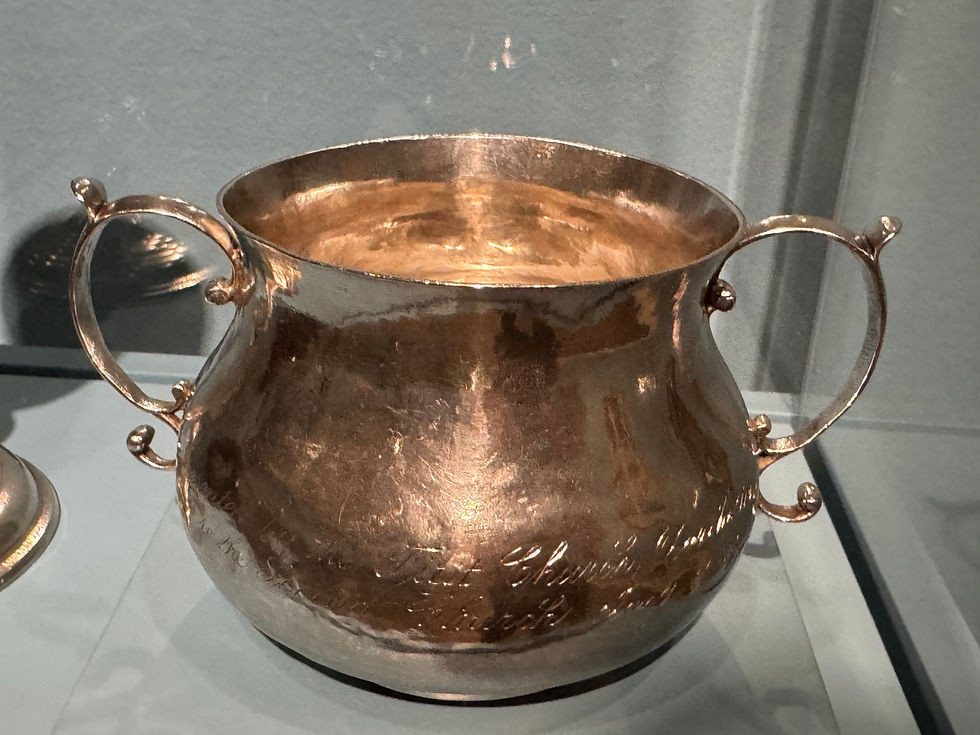
Myer Myers Sugar Dish
American, 1723-1795
Sugar Dish, c. 1745-75
Silver
The Bayou Bend Collection, gift of Miss Ima Hogg, B. 69.96
ms.
Myer Myers, the first Jewish silversmith in the colonies, fashioned this sugar dish in New York when the growing demand for the sweetener in Europe and the American colonies was met primarily with sugar grown on Caribbean island plantations, which relied on the labor of enslaved Africans. Sugar cultivation and processing were arduous and labor-intensive, but an enslaved workforce made it immensely profitable for plantation owners and others in the trade.
This sugar dish, with a form adapred from Chinese porcelain, has a cover that could serve as a spoon tray when serving tea.
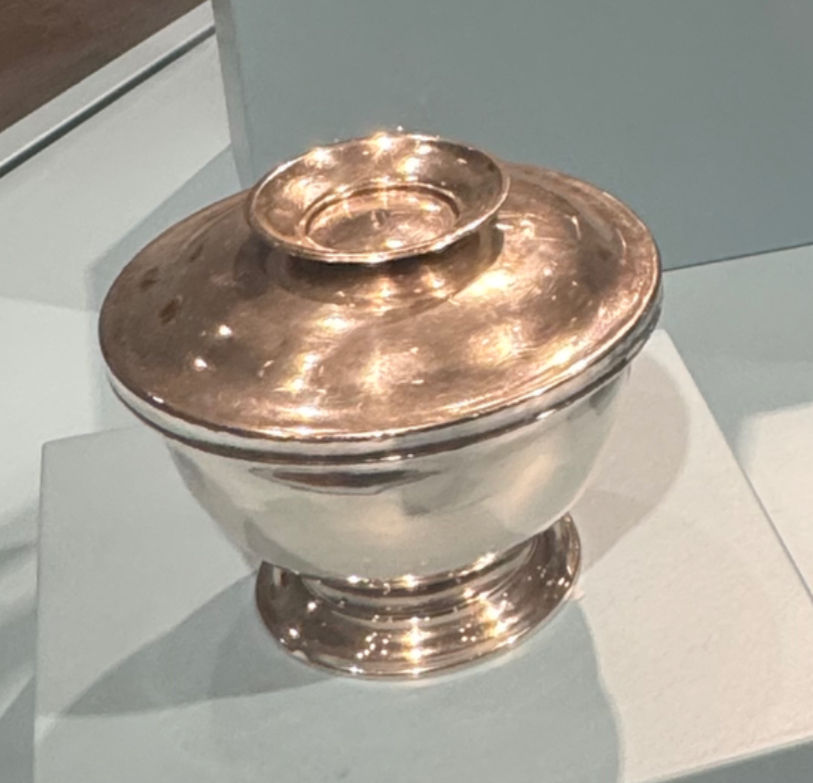
Coin Silver Tea & Coffee Service by Eoff & Shepard
Eoff & Shepard
American, active 1852-1861
Retailed by Ball, Black & Co.
American, active 1852-1874
Tea and Coffee Service, c. 1852-61
Silver
The Bayou Bend Collection, gift of
Dr. D. Robert and Beverly B. Wiemer,
B. 2020. 7.1-. 6
The components of this tea and coffee service feature finely engraved images referring to their function. Sugar cane and palms on the sugar bowl and coffee beans and palms on the coffee pot serve as reminders of the crops' warm-climate origins. A faneiful Chinese sailing ship on the teapot recalls the time when most tea was grown in China. A cow on the creamer is an obvious choice. Rabbits on the waste bowl were probably chosen because they could be fed with household food scraps.
The Dam on the Connecticut River
In contrast with the generic images on the other components of this service, the water kettle depicts a specific scene: the dam on the Connecticut River at Holyoke, Massachusetts.
Developed in the 1840s, the dam powered
mills for spinning and weaving cotton and making rag paper in the planned industrial city, one of many New England mill towns. The profitable relationship between cotton plantation owners who used enslaved workers and mill owners was memorably described by Massachusetts senator Charles Sumner as "an unholy union between ... the Lords of the Lash and the Lords of the Loom."
Simeon Soumain Tea Caddy
American, born England,
1685-C.1750
Tea Caddy, c. 1728-33
The Bayou Bend Collection, gift of Miss Ima Hogg, B. 62. 38
Tea was a popular beverage in 17th-century Europe and America and an important commodity in international trade. Following the Seven Years' War (1756-63), Britain's treasury was depleted, leading to the taxation of tea and other goods and in turn arousing sharp discontent in the colonies.
This tea caddy, a fine example of the late Baroque style, was made for John and Marian Morin Scott of New York and inherited by their son John Morin Scott, a founding member of the Sons of Liberty, organized in 1765 to resist British taxation. During the Revolution, Scott served as an officer under George Washington.

Roswell Gleason & Sons Cruet Stand
American, active c. 1851-1871
"Magic Caster" Cruet Stand,
C. 1857
Silver plate and glass
Gift of Aron and Anaruth Gordon,
84.177.1-.7
This cruet stand, or table caster as it was known in the 19th century, is composed of a decorative stand with cut-glass bottles for vinegar, oil, salt, pepper, mustard, and other condiments.
Patented in 1857 as the "Magic Caster," the tableware has revolving doors which can be opened or closed with the twist of a knob to reveal or hide its contents. The pointed arches and Gothic Revival ornament make the stand resemble an ecclesiastical object rather than something intended for the dining table.

California Silver Manufacturers
Shreve & Co. Satsuma Bowl
American, active 1852-1967
Satsuma Bowl, c. 1890-1910
Sterling silver, earthenware, and enamel
Bequest of Mary Beth Baird, 2004.1274

Arts and Crafts Silver Manufacturers
Mary C. Knight Bowl and Saucer
American, 1875-1956
Bowl and Saucer, c. 1903
Silver and enamel
Museum purchase funded by Mr. and Mrs. Robert S. Hinds,
82.158. 1-. 2
As the manager of the Handicraft Shop, a workshop at the Society of Arts and Crafts in Boston, Mary C. Knight oversaw a group of independent workers while designing and creating her own pieces. Knight used leather-working punches to stamp her designs, seen in the grapes on this bowl and saucer, instead of more traditional enamel techniques. She likely worked alongside fellow silversmith Mary Peyton Winlock, whose work is also shown here.

Native American Sterling Silver and Other Metals
Diné (Navajo) Concha Belt
Diné (Navajo)
Concha Belt, c. 1900-1940
Silver, turquoise, and leather
Gift of Miss Ima Hogg
44.226
The concha belt has become iconic of the Southwest United States, but the Diné have been wearing belts like these for hundreds of years. It is thought that they adopted this practice from Native Plains tribes.
Early metal attachments were undecorated, but with the arrival of the Spanish in the eighteenth century, the Diné were inspired to add designs to the attach-ments, called conchas, the Spanish word for "shells," on their belts. In the late nineteenth century, artists began to add turquoise as well, incorporating Diné beliefs about this important blue stone. Today, a wide variety of designs and stones are used.
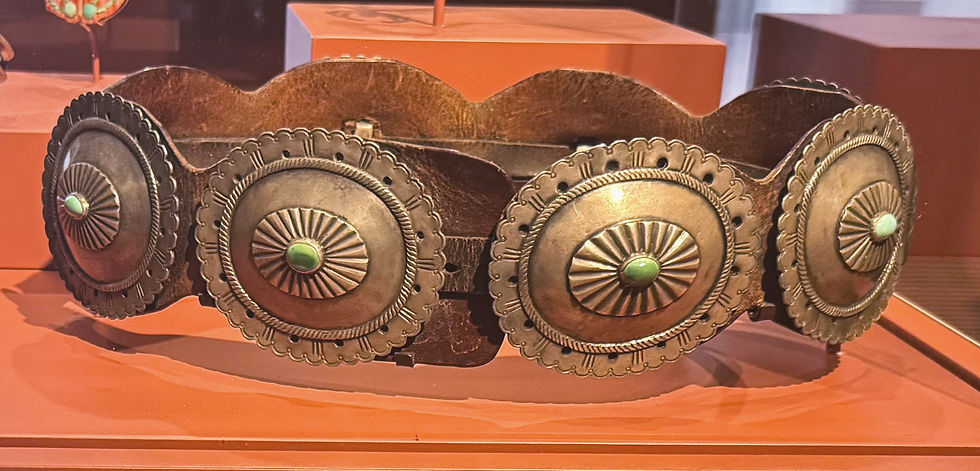
Conclusion:
Although in comparision to the entirety of the massive museum campus there is very little in the way silver in The Museum of Fine Arts, Houston, Texas. However, the museum has chosen to display some really nice examples of antique and rare silver items that are definitely worth a visit to see them.

There are also some other amazing pieces of non-silver decorative arts items to be seen at the museum as well.

Article authored on 9-25-25 by Greg Arbutine
Please Sell Your Antique Museum Quality Silver to The Silver Museum
We want to purchase all your antique sterling silver especially any pieces that have elaborate decorative work or that have any unusual themes. We love buying entire collections.
Always fair and competitive quotes given.
We also buy common grade and scrap quality silver as well.
If you have items that you'd like to sell,
or even just want to get an idea on valuation
please click the email us button for a quote.
Please send us photos, measurements and item descriptions.
Thanks,
Greg Arbutine
Silver Museum Owner



The Silver Museum buys all sterling flatware and hollowware regardless if it is rare or not. We want it all!
Please sell your Sterling Silver Pieces to The Silver Museum!
Please get our offer no matter what else you eventually do. We are always looking for great pieces for our Museum.







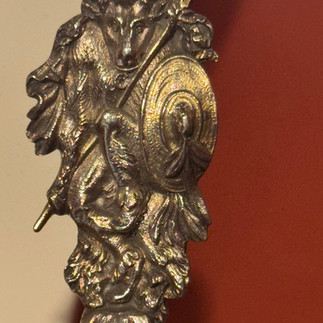

































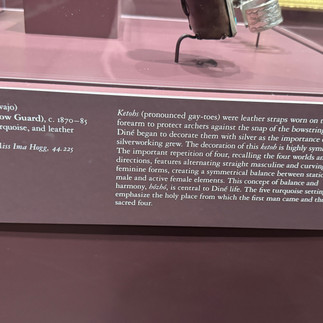









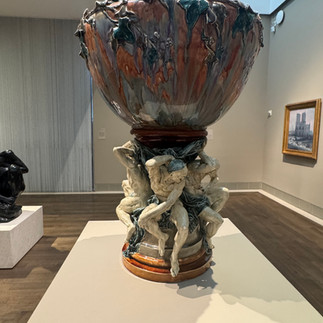









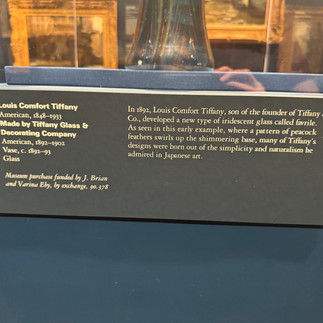













Comments